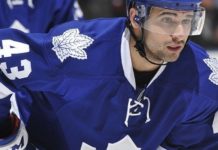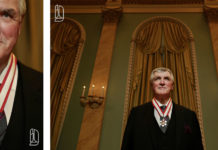Re National Hockey League Players’ Concussion Injury Litigation was denied class-action status by Judge Susan Nelson last week because of a lack of commonality between claims, forcing the former NHL players to pursue their claims against the NHL individually.
Media coverage of the case, including the exceptional investigation from TSN Senior Correspondent Rick Westhead, has led many casual observers to believe that the former players should succeed, regardless of the procedural obstacle of not being granted class-action status. But a legal analysis of the situation as it stands today suggests, more likely than not, the league will be successful in its defense.
As a quick overview of the case, the claims from Re National Hockey League Players’ Concussion Injury Litigation involved former NHL players (alive and deceased) who argued that they suffered concussions while playing in the NHL, and that these concussions led to traumatic brain injury (or increased risk thereof). The most publicized traumatic brain injury is Chronic Traumatic Encephalopathy (CTE), which was the focus of Dr. Bennet Omalu’s work depicted in the movie “Concussion”. The former NHL players are pursuing negligence and fraud-related claims.
So what is required to prove negligence and fraud under Minnesota law (the jurisdiction that the lawsuit was originally consolidated)?
Negligence Claims: Establishing Duty of Care, Breach of Duty & Proximate Cause
For a negligence claim, the former NHL players must establish a duty of care, breach of that duty, injury to the former NHL players, and proximate cause.
A duty of care is intuitive: It must be shown that there is a relationship between the plaintiff (the former NHL players) and the defendant (the NHL) which arises from an obligation on the part of the defendant to exercise due care towards the plaintiff. The duty is breached if it is shown that the NHL did not reasonably exercise its duty to protect the former NHL players throughout their careers.
Proximate cause under Minnesota law can be easily viewed as the requirement that the harm experienced in the NHL by the former NHL players is a substantial factor to their current injury. Fraud claims, in contrast, are more intent-based, and thus rely more on the NHL making false representations and concealing the link between concussions and neurodegenerative diseases from the former NHL players.
The NHL’s Legal Defenses
Despite the former NHL players’ understandable desire to seek compensation for the devastating injuries suffered during their playing careers, strong legal defenses by the NHL stand in the way of a successful result.
The first relates to the NHL’s collective bargaining agreement (CBA). Without getting too technical, US federal law prevents individuals from applying the common law to lawsuits used to enforce the terms of a labor contract. The CBA is a labor contract, and the current CBA includes terms relating to player health and safety (Article 34), while also providing for a grievance committee and impartial arbitration (Article 17). It must be noted that the court would be looking at historic CBAs used during the careers of the former NHL players in their current lawsuits; however, while inaccessible online, it is likely that these CBAs have similar terms compared to the current one.
In sum, US federal law would likely require the former NHL players to pursue their negligence claims through the CBA, not the court system. Judge Susan Nelson left this argument in flux until enough discovery is completed to conclusively decide on this matter, so this still remains a very real obstacle for the claims of the former players.
The second — and most convincing — legal defense used by the NHL relates to proximate cause. While establishing a duty of care and breach of this duty will likely be made out by the former NHL players, the NHL can argue that the injuries sustained by the former NHL players were not significantly caused by the head impacts incurred while playing in the NHL.
This defense can be illustrated by viewing the careers of specific players in the current lawsuit. For example, Dan LaCouture played in the NCAA, AHL, Swiss league, and KHL, while plaintiff Gary Leeman played in the AHL, WHL, IHL, and DEL. Without knowing what evidence will be presented, the fact that it is common practice among NHL players to play in multiple leagues before and after playing in the NHL makes this a difficult issue to overcome for the former players.
In regards to fraud-based claims, there is no evidence thus far that suggests that the NHL concealed the link between concussions and neurodegenerative diseases at the time the former NHL players were playing in the league. Private emails were released in 2016 that show internal dialogue of NHL front office executives between 2011 and 2014; however, these emails fail to point to the NHL having definitive knowledge of the requisite link to suggest fraud.
More recently, a 2011 email from NHL medical consultant Willem Meeuwisse was also released, and while the email shows the NHL concealing the number of NHL players returning to games after suffering a concussion and “get[ing] a worse injury” from doing so, no link between concussions and neurodegenerative diseases is present. Even if the NHL had sufficient knowledge of this link in 2011, statements from these emails are mostly prospective in nature when imposing liability – the vast majority of players from Re National Hockey League Players’ Concussion Injury Litigation played in the league before the 2000s.
The litigation between the NHL and the former NHL players continues to drag on, and more information may surface that could alter the outcome of this case. There may even be a settlement, as the negative publicity may force the NHL’s hand. The former NHL players certainly deserve justice for the health pains they’ve experienced over the years, and a large faction of the hockey community supports their cause. Nevertheless, as things currently stand, the NHL appears to be headed towards a successful result.
Disclaimer: The opinion expressed in this article is my own. It is not associated with any other person or entity.

































![New Leaf Anthony Stolarz on the opportunity in Toronto: “In Florida, I knew my role as a backup… Now, [Joseph Woll] and I are competing for starts… As a goalie, that’s all you can ask for” Anthony Stolarz, Stanley Cup win, now Maple Leaf](https://mapleleafshotstove.com/wp-content/uploads/2024/07/anthony-stolarz-sc-100x70.jpg)
